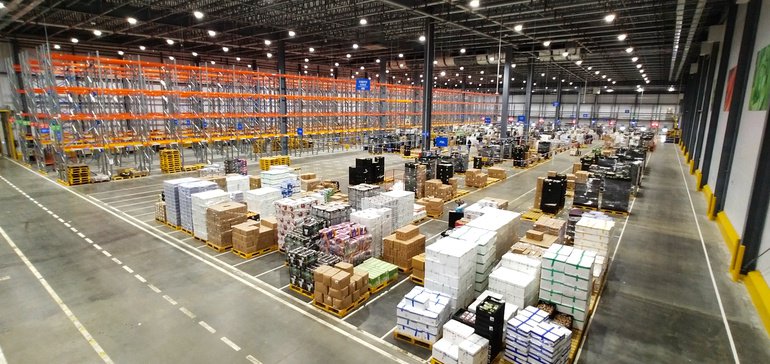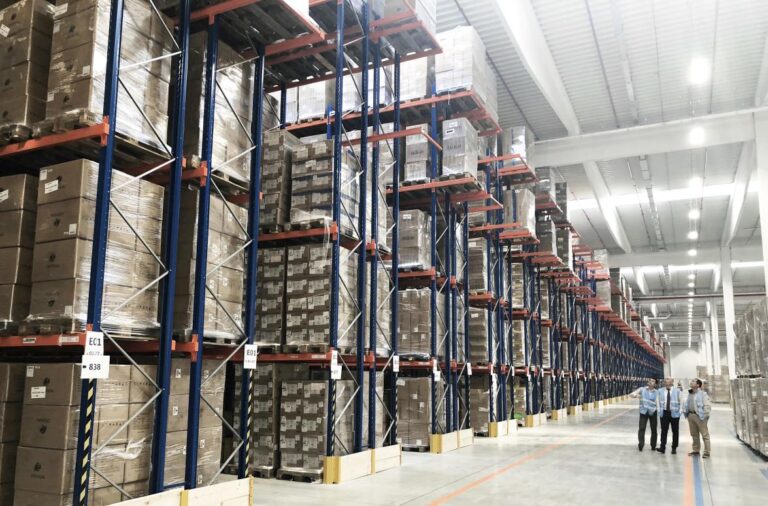An advanced warehouse management system can help warehouse operations run at their best. Here are 10 questions asked by consultants. They can be used to diagnose whether a warehouse management. System is capable of providing first-class support for warehouse management operations. The answer to most questions from the best companies in the business should be: “YES.”
1. Whether your warehouse can handle multiple orders at the same time
In a paper-based warehouse, operators can only process one order at a time.
In the United States, about 2 medium-sized warehouses (with an area of 10,000 square meters). And 1 large-scale warehouse (with an area of 70,000 square meters) are still operated. And managed through paper documents. In order to improve the productivity of the warehouse. And reduce the operator’s work trip inside the warehouse.
It is necessary to carefully design the sorting strategy and route. However, if it is necessary to implement task interleaving operations. Fast sorting during peak hours or two-way picking operations, etc.. It is too complicated for paper-based management. The use of radio frequency and bar code technology systems enables warehouse operators to pick multiple orders simultaneously. In the United States, less than 1% of warehouses also use voice-activated sorting guidance technology. The application of this technology can indeed improve the productivity of picking difficult-to-handle items.But may reduce the accuracy of inventory control.

2. Whether the accuracy of inventory exceeds 99%
All warehouses should achieve 99% accuracy in inventory control. The best 0% warehouse achieves 99.95% accuracy. To this end, regular cycle counting is a fundamental first step. Initially. The system should determine the number of samples for the ring count based on the Retrievable.Analysis of the value of each stock-keeping unit (SKU).
The system should then help managers lock down error-prone SKUs. A better method is for the management staff to count when the warehouse status is easy to count. For example, immediately after the building is divided, to see if the storage space is empty. Or to return some goods. Of course, because each SKU is required to be counted accurately. Achieving 99.95% accuracy also requires a change in the counting method. Because SKUs may be misplaced. So it’s better to count by channel.
3. Whether it can give customers a completely reliable delivery date commitment
To promise same-day or next-day delivery to customers. Batch integration of once- or twice-daily deliveries in one of warehouse management systems (WMS). And enterprise resource planning (ERP) systems cannot support reliable deliveries.
Therefore, the inventory data of WMS and ERP should be basically synchronized.And a particularly advanced system can form support for sales personnel to change delivery. Promises given storage capacity and transportation conditions.
4. Can the collected data identify opportunities to improve performance?
Warehouse management personnel should be most familiar with the basic standards of warehouse operations. Such as the number of items handled by each person per hour. The unfulfilled rate of orders at a certain point in time, the order pressing time. And the handling cost of each item. By comparing and analyzing the results of changing operation methods or operators.Warehouse managers can find better operation methods. Such as adjusting the storage location of goods that are turned over at the same time. Adjusting the tasks of operators or changing the sorting procedure.


5. Can it balance the workload between different areas of the distribution center?
Poor warehouse management can cause a serious imbalance in the workload of the various areas of the distribution center (DC). Managers should plan, monitor, and adjust the workload between each zone. Monitoring warehouse operations is common. Most warehouse managers who automate material handling have a near-instantaneous grasp of the workload in each zone and.
If necessary, reassign operators to balance the workload. But making plans is less common. About 1/5 of the largest warehouses in the U.S. use engineering labor metrics based on time. And motion to calculate the theoretical time required for each task. And compare it to the time it takes to actually do the job. Typically, these standards determine the base salary for operators.But using the data to better plan day-to-day labor needs requires managers to set a target completion time for specific tasks. Such as would be required during peak sorting periods labor resources. And determine the completion time for each task.
6. Can you combine items to simplify the work of downstream partners?
Poor warehouse management makes the warehouse look like a place of stock.
However, good warehouse management can bring the activities of upstream.And downstream partners into the distribution center. Employing carrier-approved labels, export documentation. And proper packaging will all simplify life for shipping partners. More advanced is the loading and marshalling technology with professional technical experience.
Such as loading vehicles according to the order of unloading. And even matching the shelves with rollers for retailers’ display goods. Some U.S. retailers require distribution centers to select the appropriate delivery destination. And carrier based on the weight and volume of the shipment being shipped. A modern distribution center should be able to delay assembly, add product features. Increase product configuration options and customize core products. Such as special components configured by customer country.
7. Do you or your customer scan and receive the goods at one time?
A bad receiving operation requires scanning and testing of each item received. The optimal receiving operation can be completed by scanning only one label. Which contains or directly gives all the information of the delivered goods. Usually, a scanning receipt operation can use RFID or barcode identification system. And the pre-delivery notice agreed between the supplier and the customer.
8. Whether each warehouse manager can support each other in the multi-point distribution network system
Poor management makes the warehouse look like an isolated facility.
But good management enables warehouse managers to see the inventory status of all distribution centers in the network system.And customers can check the status information of orders at any time. More advanced warehouse management systems are also capable of identifying problems. And alerting warehouse network system managers within minutes. If the system is out of stock, generally. Customer orders can be transferred between adjacent distribution centers.
A good warehouse management system will not submerge management personnel in alarm signals. But filter them first, and then submit the reported problems to appropriate management personnel. More advanced warehouse management systems also include automating the execution. And completion of decisions made by experienced warehouse managers. Such as adjusting peaks and valleys for receiving and sorting operations based on the order in which delivery trucks arrive. Of course, such systems are few and far between.

9. Has the manual quality inspection been cancelled?
Warehouses with average management levels often require manual quality inspection of goods.
While well-managed warehouses can reasonably eliminate non-value-added additional processes. There are two ways to eliminate manual quality checks. One is to establish a set of complete and reliable operating procedures. And the system should support the sampling process where sampling errors often occur. For each sampling, the system should require the operator to pass the testing procedure. And the system should also clarify what kind of sampling operation is reliable. And when quality testing cannot add value to the product.
Second, if the cost of errors is far greater than the value of the goods themselves. Then the quality inspection procedures should be automated. Automatic weighing is common in the pharmaceutical industry. And it will be adopted by other industries as well. This of course requires accurate data. However, in some industries, such as the semiconductor industry. The automatic weighing method is not necessarily adopted because the weight of the individual cargo is too light.
10. Does the supply chain have the ability to handle reverse logistics
In Europe, legislation requires companies to track and recycle product packaging. Failure to meet the requirements could result in a $30,000 fine. Usually the packaging is returned to a designated, often outsourced, waste disposal centre. For returns, poor management doubles the shipping operations. Eg to the shipping warehouse and then to the returns processing warehouse. And good warehouse management requires the customer to be empowered.
When the goods pass through the entrance of the consignee’s warehouse. The consignee must follow the process to identify problems such as package or product damage. Wrong quantity or product quality defects, etc. There may be opportunities to increase sales here. The consignee is then told where the goods should be sent. The consignee then uses his PC printer to generate a barcode label with receiving disposition instructions. And sends the shipment to the designated location.
Maxtop Sourcing China Sourcing Agent helps thousands of small business owners, dropshippers,amazon store owners, wholesalers,retailers, contractors to select,order,inspect,quality control,store, pack, label, and deliver. Making orders fullfilling smoothly and service beyond the quality.